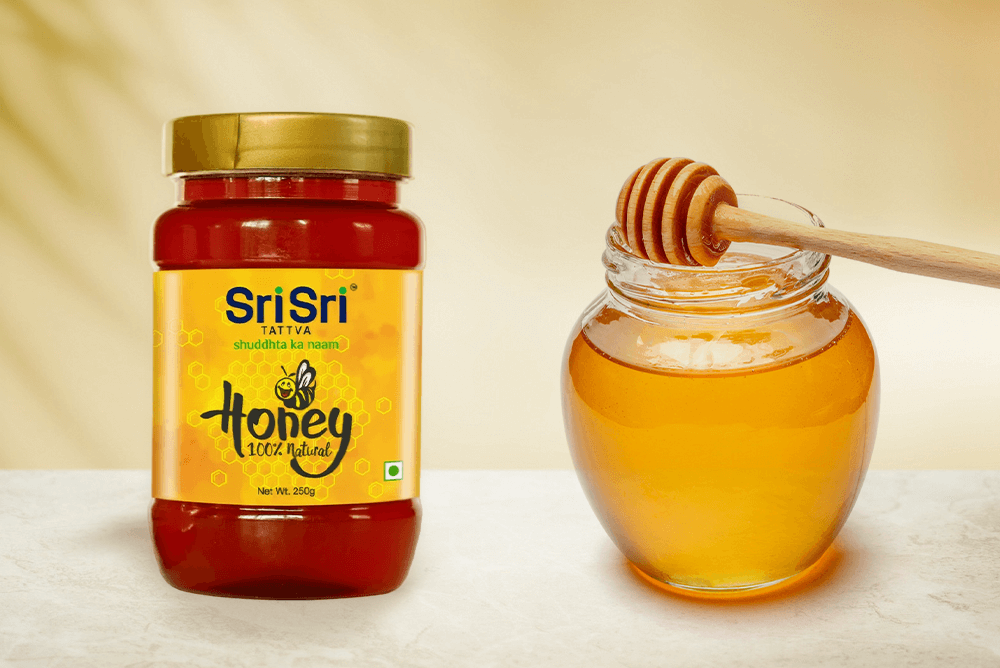Have you ever stood in the grocery aisle, staring at rows of honey jars, wondering which one to pick? On one side, you have raw honey, proudly labeled as a natural wonder. On the other hand, the familiar regular honey that you have used in your tea and recipes for years. But is there really a difference beyond price and packaging? More importantly, which is actually better for your health?
Let us take a deeper look at raw honey benefits, how it differs from regular honey, and which one deserves a place in your kitchen.
Honey: Nature’s Sweet Gift
Honey has been cherished for thousands of years, not just as a sweetener but for its therapeutic properties. Ancient civilizations, such as the Egyptians and Greeks, valued it for its medicinal properties. Today, honey is more than a sugar substitute. It is a pantry staple with claims of being an all-natural superfood.
In the world of honey, there is a big debate about raw versus regular honey.
What Makes Raw Honey Different?
Raw honey is essentially honey in its most natural form. It is unfiltered and unpasteurized, meaning it goes from the beehive to the jar with minimal processing. This helps it retain valuable components, such as pollen, propolis, and natural enzymes.
Why does that matter? These additional elements are responsible for many of the touted benefits of raw honey. They can enhance your immune system, aid digestion, and even help with minor wound healing.
On the other hand, regular honey is often pasteurized and filtered to enhance its appearance, shelf life, and consistency. Unfortunately, this process strips away much of the pollen and beneficial enzymes. Some cheaper varieties may even contain added sugar or corn syrup. This is definitely not what you want when seeking pure honey.
The Nutritional Power of Raw Honey
So why do health enthusiasts rave about raw honey? Because it is packed with antioxidants, antibacterial enzymes, and vitamins.
Antioxidant support helps combat free radicals and reduce oxidative stress in the body. As a digestive aid, it contains enzymes that help break down food. Raw honey also provides natural relief from coughs and soothes sore throats.
These advantages make raw honey seem like a no-brainer. But before you toss out your regular honey, there are a few important limitations to consider.
Limitations and Risks You Should Know
Both raw and regular honey are high in natural sugar. Although raw honey may seem healthier, it should still be consumed in moderation, especially for individuals monitoring their blood sugar levels.
A critical health warning is that neither raw nor regular honey is safe for infants under one year old. The risk of botulism in babies’ immature digestive systems makes honey unsuitable until after the first birthday.
Practical Tips: Choosing the Right Honey for You
Wondering how to pick genuine raw honey? Here are some simple tips.
Look for labels that state’ raw,’ ‘unfiltered,’ and ‘unpasteurized.’ Check the consistency, as raw honey is often thicker and may crystallize over time. Buy from trusted sources or local beekeepers to avoid adulteration.
Sri Sri Tattva Honey, 100% Natural, is a great option!
Regular honey does have its place. It is fine for general cooking, baking, or when you need a stable, sweet ingredient that dissolves easily in hot beverages.
Ultimately, the choice between raw honey and regular honey boils down to what you want
from it. If your goal is not just sweetness but also natural health benefits, raw honey is the way to go. However, remember to use it wisely like any other sweetener.
So next time you reach for honey, think beyond the label. Choose pure, choose wisely, and let nature’s gift bring sweetness and wellness into your life. Sri Sri Tattva Honey 100% Natural ensures you get delicious goodness in every drop.








